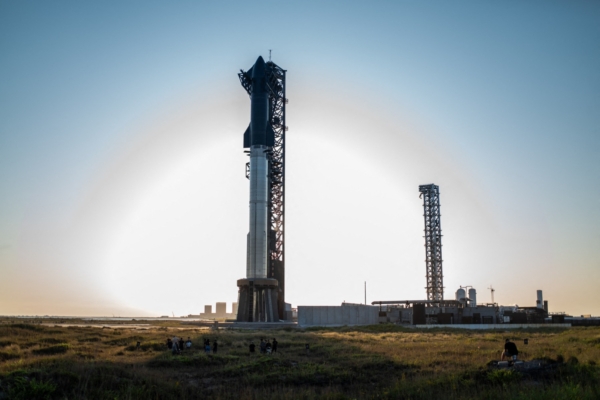On Saturday, October 12th, the Federal Aviation Administration (FAA) of the United States approved the launch permit for SpaceX’s Starship, allowing Elon Musk’s SpaceX company to proceed with the fifth test flight of the Starship on Sunday as planned. This historic event marks the most powerful rocket system ever built, with the potential to one day send humans to the Moon or Mars. Each test flight of the Starship has attracted significant attention from the public and the aerospace community.
The FAA announced on Saturday that SpaceX’s Starship had “met all safety, environmental, and other permit requirements for suborbital test flight.”
Previously, FAA had indicated that a decision on the test flight permit for the Starship would not be made until the end of November. However, SpaceX continued its launch preparations even before receiving the Sunday test launch permit from the regulatory authority, including issuing airspace and maritime notifications and road closures near the Starbase launch site.
On the eve of the launch, SpaceX posted on the social media platform X that the Starship team was loading propellants and the weather conditions were ideal for today’s flight test!
The launch webcast is scheduled to start approximately 35 minutes before liftoff, with the current planned launch time set for 8:25 AM Eastern Time on Sunday.
The Starship system is designed to transport crew and cargo to Earth orbit, the Moon, and beyond. SpaceX’s Starship spacecraft and its super-heavy rocket are designed for full reusability, which could potentially reduce the cost of placing payloads into orbit.
According to SpaceX’s website, the super-heavy rocket booster carrying the Starship spacecraft will launch from the Starbase in Boca Chica, Texas. The mission includes the super-heavy booster returning to the launch site, attempting to catch the rocket with a launch tower; and the test mission also involves the Starship spacecraft performing a water landing in the Indian Ocean off the coast of Western Australia.
The Starship is the largest and most powerful rocket system ever built, standing at a height of nearly 400 feet (121 meters). It boasts the highest number of engines in history at the bottom – with 33 engines. These engines can generate 17 million pounds (7,590 tons) of thrust when propelling the Starship spacecraft from the launchpad into space.

